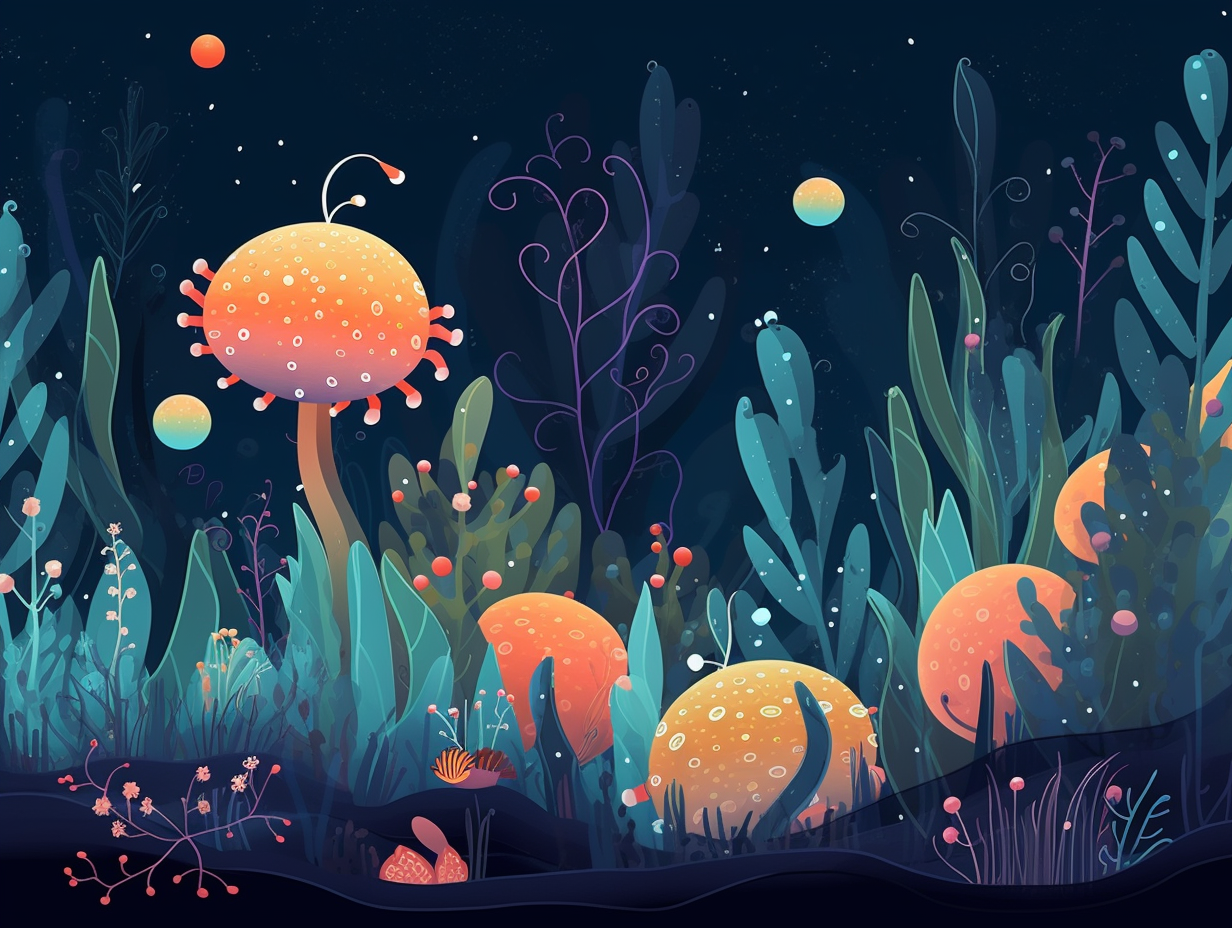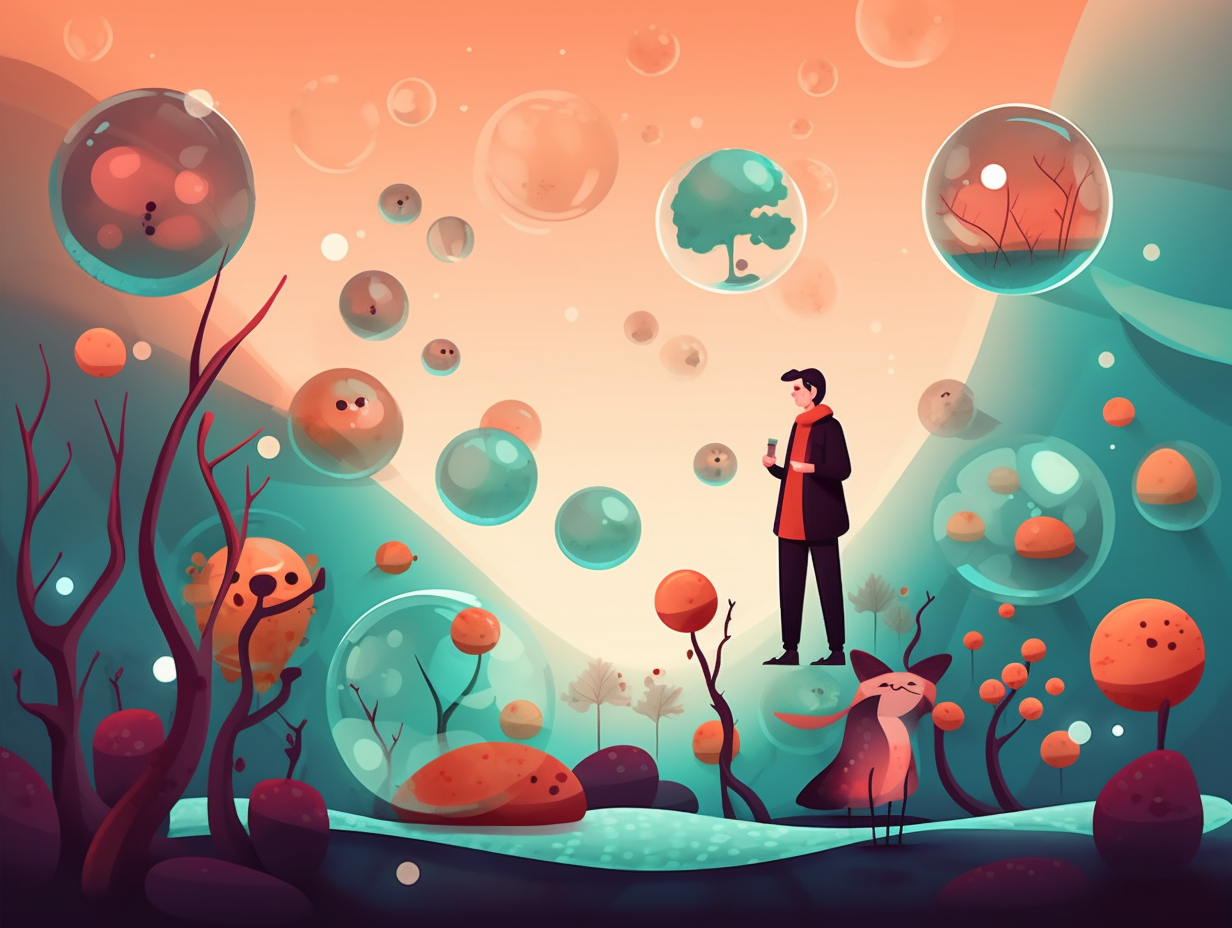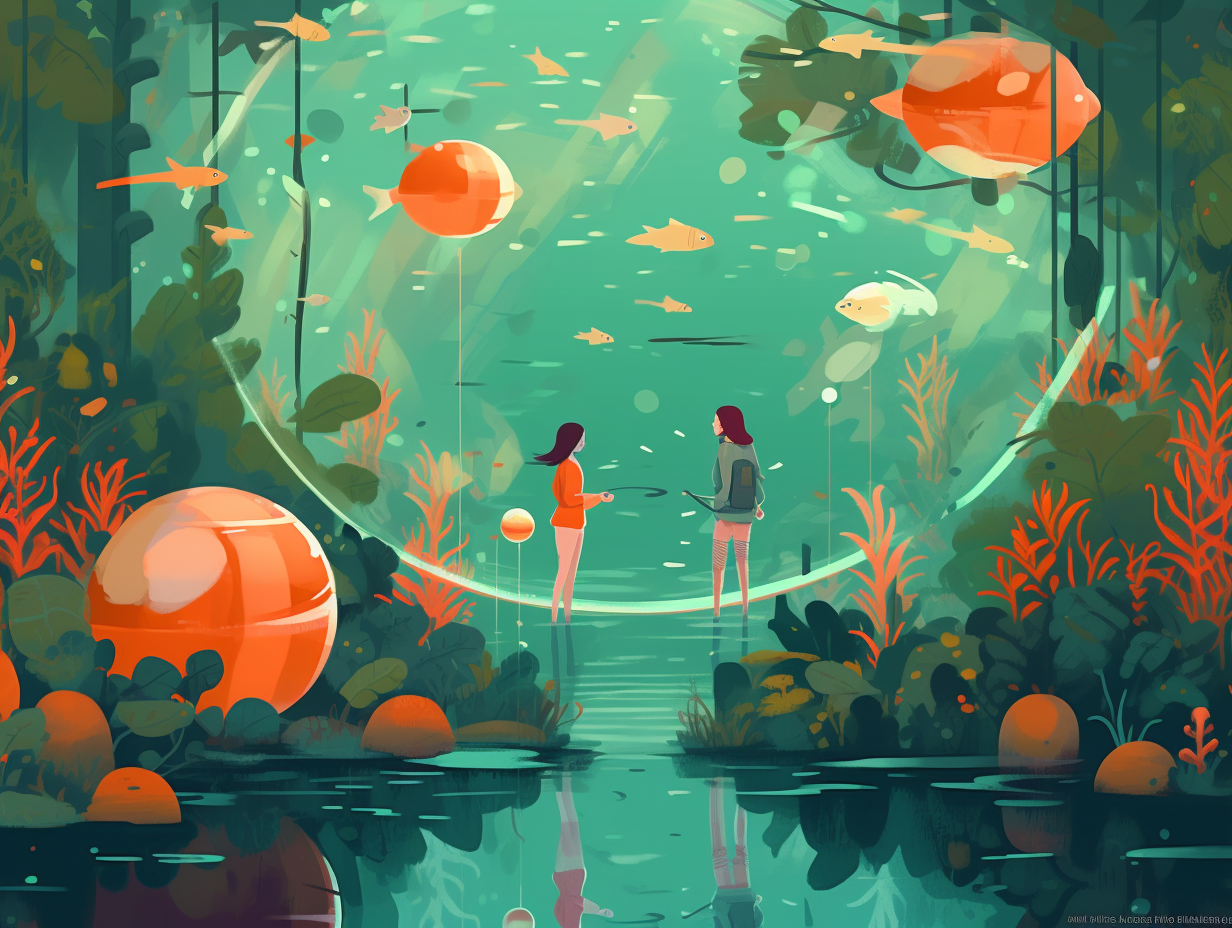Whip Into Fun: 13 Fascinating Facts About Flagellates You'll Absolutely Love

1. Termite Vegans
Termites walk into a bar, look around, and ask, "Is this place vegan-friendly?": These little critters depend on flagellates living in their hindguts to break down wood and tough plant material into energy, with up to 60% of the total hindgut weight being contributed by these digestive microorganisms reaching 105 cells per individual host.
Source => frontiersin.org
2. Soupy Swim Struggles
Ever felt like you're stuck in thick soup, barely crawling through life? It turns out our tiny flagellate friends can relate: Flagellar propulsion takes place in the realm of low Reynolds number fluid dynamics, where each whip-like motion creates volumes of fluid in a capture zone, effectively propelling the organism through its viscous world. Flagellate critters can fine-tune their shape and motion for specific purposes like feeding or swimming, and even the presence of a nearby surface can make waves in their microcosmic journeys!
Source => link.springer.com

Did you know protozoa are like the Michael Phelps of the microscopic world? Discover how these tiny organisms swim and shuffle using their unique features!
=> Fun Facts about Protozoa
3. Naegleria Dance Moves
Get ready for a flagellate fiesta, with a whopping guest list variation featuring Naegleria's finest on the dance floor: The number of flagella per cell in Naegleria species can range from 1 to 8, with an average of 2.4, adding extra rythmic complexity to their whip-like moves, and N. australiensis showing the most diversity while N. fowleri sticks to a consistent duo routine.
Source => pubmed.ncbi.nlm.nih.gov
4. Flagellate World Tour
Move over, Kardashians, there's a new clan dominating the waters: Feast your eyes on Flagellates! These microscopic stars occupy diverse aquatic habitats, from oligotrophic open oceans to eutrophic inshore waters, mud flats, and marshland ditches, with their impressive population reaching up to 105 cells ml-1 and 106 cells cm-3 in the plankton and sediments, respectively.
Source => sciencedirect.com

5. Off-the-Grid Energy
Don't let their lack of energy powerhouse deceive you; they're not lazy, they're just on a mitochondria detox: Some flagellates, like diplomonads and parabasalids, forgo the use of functional mitochondria and instead opt for alternative energy pathways, making them the free-spirited, off-the-grid cousins in the eukaryote family.
Source => courses.lumenlearning.com
6. Aquatic Rave Scene
In the world of microscopic party animals, flagellates are the aquatic ravers that never sleep: these groovy protists can number up to 105 cells per milliliter in plankton and a whopping 106 cells per cubic centimeter in sediments, making them the most happening guests at the underwater microscopic bash, and crucial players in maintaining the microbial food web equilibrium.
Source => sciencedirect.com
7. Sperm Cells' Whirlpool
Swimming in a sea of oddity: flagella on sperm cells pull a double shift as both mover and shaker, influencing embryonic development and balancing left-right asymmetry. Their day off? It's called Kartegener's syndrome: a serious ciliopathy where flagella goes AWOL, leading to infertility and chronic bronchitis, kickstarting a deep dive into a whirlpool of over 30 ciliary mysteries.
Source => onlinelibrary.wiley.com
8. Flagella Evolution Edge
Before flagella became the ultimate cellular party whips, they were busy whipping the competition into shape: the 9+2 flagellum is a defining characteristic of eukaryotic organisms, having originated from a common ancestor, and granting a massive edge in the evolutionary race, which likely explains why none of today's eukaryotes lack these motley whiplash wonders.
Source => ncbi.nlm.nih.gov
9. Freshwater Glow Predicament
Much like a lit-up rave in the ocean, bioluminescent organisms are a wild party of glowing fish, bacteria, jellies, and even land dwellers like fireflies and fungi. But in the freshwater scene, they totally freshwater the bed: it is extremely rare to find bioluminescent flagellates in such habitats, with nearly no organisms native to them possessing this unique ability.
Source => nationalgeographic.org

10. Giardia's Unwanted Party
If Giardia threw a pool party, nobody would want to attend: This pesky flagellate is responsible for the diarrheal disease giardiasis, which can be easily transmitted through contaminated water, food, surfaces, or objects, requiring us to properly sanitize and treat our drinking and recreational water sources to avoid unwanted intestinal chaos.
Source => cdc.gov
11. Ice Cold Survivors
In a world where Jack Frost shows no mercy, flagellates have evolved to be the ultimate cold-hearted survivors: these microscopic organisms combat the icy chill of Antarctic ecosystems by reducing their metabolic activity in nutrient-starved conditions and whipping out antifreeze proteins like a secret weapon, making the daunting prospect of a winter wasteland just another Tuesday.
Source => link.springer.com
12. Tiny Sea Builders
Ahoy, ye tiny aquatic architects of the sea! In the watery realm where tintinnid flagellates roam, even the phrase "home is where the heart is" takes on a distinct briny twist: These minuscule maritime marvels craft elaborate loricae out of protein rather than chitin, not only showcasing their craftsmanship, but also helping transport chemical compounds to deeper waters and spreading the nutrient love throughout the benthic food web.
Source => ncbi.nlm.nih.gov
13. Flagellate Dining Etiquette
Feeling peckish, flagellates style? Imagine scarfing down grub using a fancy collar and extendable arms: Some flagellates have unique feeding mechanisms, such as choanoflagellates which use a distinctive 'collar' of microvilli to capture bacteria for consumption, and cercomonads which employ pseudopodia for feeding.
Source => sciencedirect.com
Related Fun Facts




















